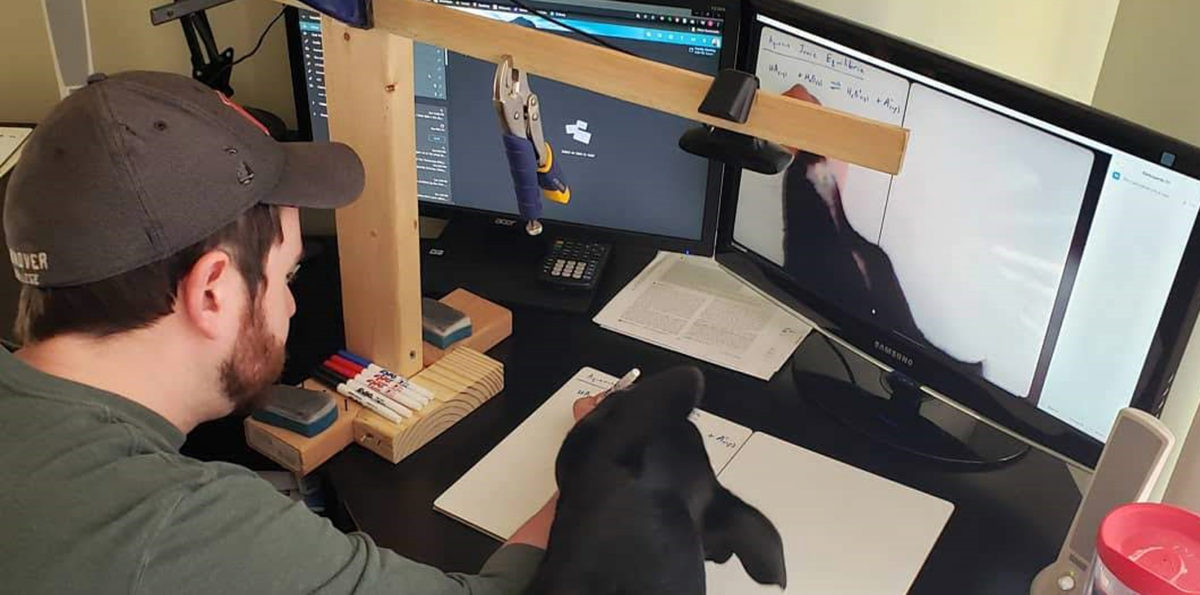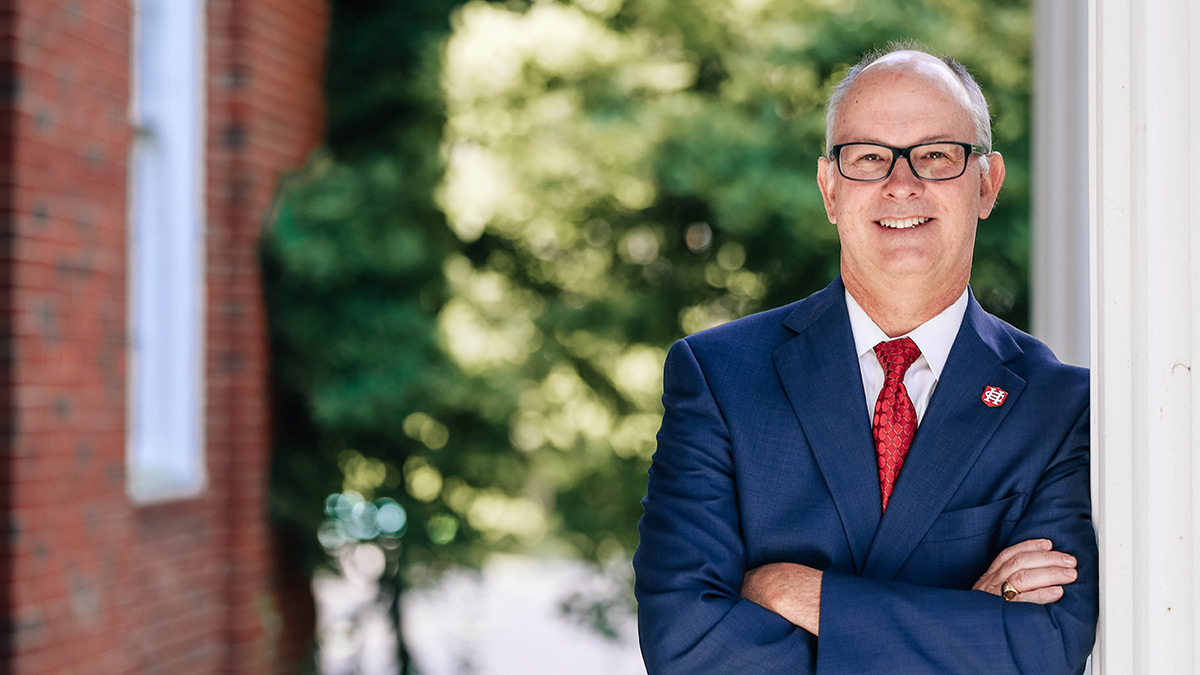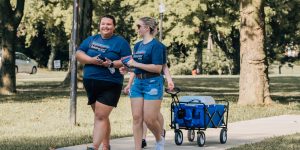Long-distance Connection

Valerie Young normally does not end her communication class by telling her students “I love you!” Normalcy, however, began an extended hiatus weeks ago and the COVID-19 pandemic continues its onslaught around the globe.
“I wasn’t sure how the first day would go, but my questions and fears disappeared after I saw their faces on the computer screen,” said Young, reflecting on her first day of remote instruction. “When we were signing off, instinctively, I said, ‘Thanks, everyone. Goodbye. I love you,’ because that might be more typical of the way I’d sign off a video chat with my far-away loved ones.”

For nearly 200 years, the quality of a Hanover College education has been uniquely and deeply tied to the relationships formed between faculty members and students during their time on campus.
That special bond has been put to the test in recent weeks. Winter term was suspended March 17, giving students the opportunity to return home and begin an early and prolonged spring break through March 29. Classes resumed March 30 in a variety of virtual formats after a 12-day scramble to shift from face-to-face learning.
Despite challenges created by distance, time and technology, Hanover’s faculty continues to foster those relationships and maintain connections vital to the successful completion of the winter term.
“I have been so impressed with the way my colleagues have embraced this rather chaotic situation,” stated Young, associate professor of communication and chair of a five-person ad hoc committee overseeing the College’s campus-wide immersion into remote learning. “We had to change a big part of the way we establish and maintain personal relationships with our students – the very heart of what makes Hanover so distinctive. I think it’s because of our emphasis on the personal – that every student matters – that our relationships with our students form the foundation for their education.”
Modes of delivery vary widely among more than 100 faculty members who are teaching approximately 300 courses through the end of the term, which is scheduled for May 1. The expected goals, however, remain the same.

“Our mission is focused on student transformation and academic success, and that has not changed. It cannot change,” said Hanover President Lake Lambert. “We must do everything possible to ensure the success of each of our students using remote instruction.”
“We have a solid foundation in caring for our students and this shift in the delivery of how we teach – moving from in-person classes to remote instruction – only moves the needle on the delivery mode,” declared Young. “But it doesn’t change anything about how much we care about challenging our students, engaging them with deep thinking and learning, and creating community in a student-centered environment.
Glené Mynhardt, associate professor of biology, is using a variety of tools to teach principles of systematics and direct laboratory research. She is blending face-to-face video chat sessions, video lectures and online discussion forums to deliver content and interact with her students.
“Despite the remote nature of our interactions, my students have been really good about communicating and expressing their needs and concerns,” said Mynhardt, 2017 recipient of The Arthur and Ilene Baynham Outstanding Teaching Award. “We are all so grateful for the community we built in person in the months before.”

Tim Cunningham, assistant professor of chemistry, has been teaching quantum mechanics and principles of chemistry through live lectures, while also recording lectures for later review. He is hosting virtual lab sessions and utilizing software for students to interact, and even submit homework, through their phones.
“Reconnecting with students has been a bit challenging because everyone has been stressed given the current situation,” noted Cunningham. “I tried to adapt my classes so that there were minimal changes between in-person classes and online classes. The students seem to like and appreciate that.”
While the College’s faculty members have altered their approach, the students have also reassessed their typical methods of learning.
“There is a natural hindrance to students not wanting to video chat with their professors one-on-one as it may feel ‘awkward,’” said Cunningham. “But the more I try to push for making the one-on-one meetings normal, the better this situation is for both me and the students.”
“Although students have been forced into a situation where their assignments, exams, readings and projects rely on them finding time to do them without my direct guidance, many of them have become independent self-motivated scholars overnight,” added Mynhardt. “I have also found that those students who tend to be less-vocal in class, or the commuters that may have trouble being present for in-person classes, have been really engaged as well.”
Despite the vast number of challenges, connections between Hanover’s instructors and students continue to be strong.
While revisiting the end of her first remote class session, Young offered, “After I said it, I apologized and explained it was out of habit to sign off a video chat that way. To my amusement, a few of the students responded, ‘Bye, mom. Love you, too.’ This was a spur-of-the moment expression of connection and humor that really reminded me that we have each other’s backs – in person or in our virtual classroom! We will get through this, together.”



